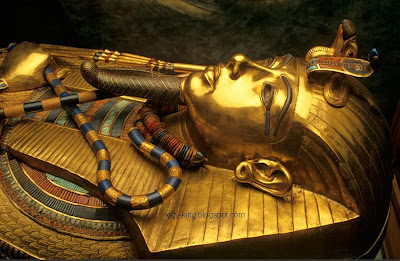Des enquêtes récentes 2010:
En Février 2010, les résultats d'une étude menée sur l'ADN de la famille de Toutankhamon ont été révélés. Ce projet a été appelé "projet familial Toutankhamon", et elle a duré pendant deux ans à partir de Sept 2007 jusqu'à octobre 2009. L'étude a été menée à travers le Projet momie égyptienne (EMP) dirigé par le Dr Zahi Hawass, secrétaire général du Conseil suprême des antiquités, et une équipe composée de scientifiques égyptiens à partir du Centre National de la Recherche, des membres de la Faculté de médecine de l'Université du Caire , et deux spécialistes de l'ADN allemandes.
 |
| بحوث وأبحاث عن الملك توت عنخ آمون - la recherche Roi Tut |
11 momies royales de la famille de Toutankhamon ont été étudiés à l'aide de radiologie et technologie de l'ADN. Ces momies venaient de KV 35, 55, 62 et 21A et B. (Seulement trois des identités de ces momies étaient certains: Yuya, Thuya et d'Amenhotep III, en plus de la momie de Toutankhamon).
Ils ont conclu que:

